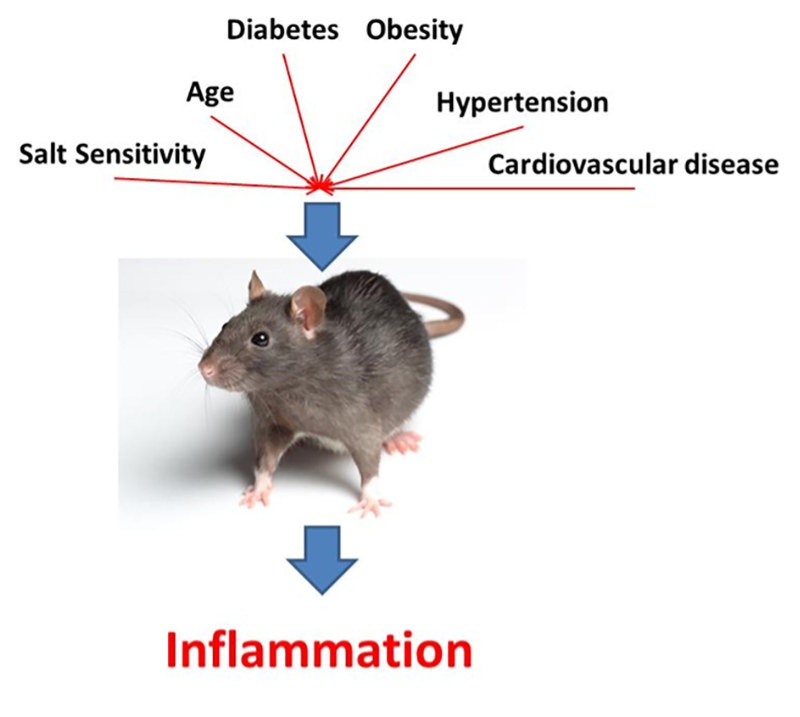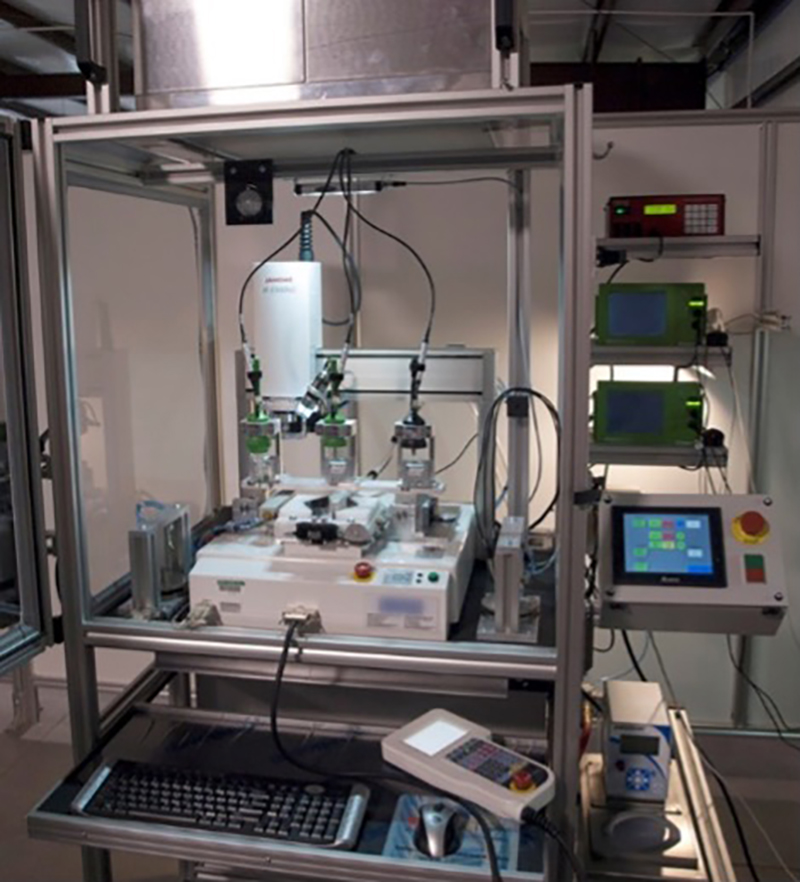Kindy Lab
Research

Alzheimer’s disease (AD) affects more than 5 million people worldwide and is known as the most common form of dementia; the number of persons afflicted with dementia is also expected to grow further with the increase in the aging population worldwide. The ratio of diagnosis of AD increases to 1 in 3 after the age of 85 and results in death 3-9 years after the onset of symptoms. AD is associated with specific clinical and pathological features such as cognitive impairment and neuropsychiatric disturbances. AD is characterized by the aggregation of amyloid-beta (Abeta) peptide into neuritic plaques and hyperphosphorylated tau protein accumulating into neurofibrillary tangles (NFTs). Abeta is generated from the sequential cleavage of the amyloid-precursor protein (APP) resulting in the production of Abeta40 and Abeta42 peptides, which give rise to aggregated fibrils and plaques. Understanding the disease process is critical to the development of therapeutics for AD.
Stroke is one of the leading causes of disability and death in the United States (Heart Disease and Stroke Statistics-2021 Update: A Report From the American Heart Association, 2021). The outcome and infarction size after focal cerebral ischemia are determined by both “necrotic” cell death and by delayed neuronal cell loss in the border zone of ischemia (programmed cell death or apoptosis). Recent therapies have emerged to treat ischemic stroke; however, these treatments do not address neuroprotection, reduction of behavioral deficit or brain infarct volume once the neuronal cell death cycle has been triggered, and mostly deal with dissolving the blood clot. Past and current neuroprotective strategies have been successful in animal models but have failed significantly in clinical trials, as such there is a need for better therapeutics. Understanding the basic mechanisms that influence cell loss helps to design drugs that are targeted to reduce cell death associated with ischemic injury and improve functional outcome.
-
Understanding the disease
Alzheimer’s disease (AD) is one of the most deleterious disorders in the aged population. To date, we do not have a drug to treat the disease. Our research focuses on several pathways to understand the disease process and develop potential targets for therapeutic intervention. We are looking at the impact of proteins such as neprilysin and the receptor for advanced glycation endproducts (RAGE) that are important in the disease process. We are looking at the role of inflammation (neuro and systemic) by studying the impact of serum amyloid P component (SAP) and serum amyloid A (SAA) proteins in AD. We also study the impact of the environment and transgenerational epigenetic effects in AD. In addition, we are developing unique vaccines for the treatment of the disease. Using transgenic and gene knockout mice as well as viruses, we can dissect how the disease develops and progresses.
-
Inflammation
Stroke is the second leading cause of death worldwide and is the primary cause of disability in the USA. The pathophysiology of cerebral ischemic injury is complex, and numerous studies have demonstrated that oxidative stress and inflammation are key in the underlying mechanisms. We have developed unique animal models of health disparities (stroke risk factors such as diabetes, obesity, cardiovascular disease, hypertension, etc.) to better understand the mechanisms associated with stroke. We are studying the impact of SAAs in stroke and the potential for therapeutic interventions. We are also using MRI studies to develop connectomes in the brain following a stroke to help us understand how these changes occur.
-
Neuroinflammation
Traumatic brain injury (TBI) is the leading cause of death and disability in adults under the age of 45, affecting ∼20% of veterans from recent wars. Once thought to be a monophasic injury, TBI is now known to trigger an indolent neurodegenerative process that substantially increases the risk of Alzheimer’s and other forms of dementia for older veterans. All disability resulting from TBI stems from its disruption of functional neural networks. The mechanisms by which TBI interrupts these networks and sets up further neurodegenerative network breakdown are inadequately defined, though injury loci beyond those observed in white matter are increasingly recognized. Our studies will help define the role of inflammation in TBI and the potential for a targeted approach using nanoparticles and other approaches.
-
Neuroengineering
The need for neural tissue engineering arises from the difficulty of the nerve cells and neural tissues to regenerate on their own after neural damage has occurred. The PNS has some, but limited, regeneration of neural cells. Adult stem cell neurogenesis in the CNS has been found to occur in the hippocampus, the subventricular zone (SVZ), and spinal cord. CNS injuries can be caused by stroke, neurodegenerative disorders, trauma, or encephalopathy. A few methods currently being investigated to treat CNS injuries are: implanting stem cells directly into the injury site, delivering morphogens to the injury site, or printing neural tissue in vitro with neural stem or progenitor cells in a 3D scaffold.
-
Industrial Hemp
In light of the therapeutic implications of cannabis and medical marijuana, the Botanical Medicine Research and Education Consortium (BMREC) in the College of Pharmacy at the University of South Florida aims to:
A) Establish a Clinical Research Program (CRP) to advance our understanding of the impact of cannabis (cannabinoid-like molecules), hemp derived and other botanical materials in the clinical setting, that will focus on the testing of compounds currently in the research space as well as those developed by the BMREC. Dr. Sanchez-Ramos will oversee the clinical trials that will be researcher initiated, company sponsored and NIH funded;
B) Develop a Basic Science Research Program (BSRP) for drug discovery technology to determine the components in cannabis (THC, CBD, CBG, CBN, etc.) and other botanic species for their therapeutic potential in various diseases both in vitro and in vivo. For these studies, Dr. Kindy will oversee the basic sciences projects that will focus in development of cannabis- and botanical-derived compounds in various animal models (mice, rats, dogs, pigs, etc) to determine the efficacy in diseases (Alzheimer's, Parkinson's, traumatic brain injury, cardiovascular disease, inflammatory diseases, etc.). In addition, the Consortium will study combinations of botanical agents, dosing regimens, pharmacokinetics, ADME, toxicology, formulations and drug delivery. Protocols will be developed to determine the therapeutic potential of these various formulations of botanical medications.
C) Establish an educational program related to other potential Botanical Medicines, in addition to medical cannabis, which will foster innovative approaches to teaching and learning, deliver educational programs, and enhance technology development. As indicated, the consortium will work with various universities, corporate entities, and foundations to provide the clinical, basic and outreach opportunities for dissemination of the information generated by the center.
Selected Publications
Bruce, A.J., Boling, W., Kindy, M.S., Peschon, J., Kraemer, P.J., Carpenter, M.K., Holtsberg, F.W., Mattson, M.P. Altered neuronal and microglial responses to excitotoxic and ischemic brain injury in mice lacking TNF receptors. (1996) Nature Med. 2:788-794.
Mayeux R, Saunders AM, Shea S, Mirra S, Evans D, Roses AD, Hyman BT, Crain B, Tang MX, Phelps CH, for the Alzheimer’s Disease Centers Consortium on Apolipoprotein E and Alzheimer’s Disease. New Engl. J. Med. 1998;338:506-511.
Yan, S.D., Zhu, H., Zhu, A., Golabek, A., Wolozin, B., Roher, A., Yu, J., Chaney, M., Soto, C., Schmidt, A.M., Stern, D., Kindy, M.S. RAGE and amyloid fibrils: receptor-dependent signaling by beta-sheet fibrils mediates cellular stress in amyloidosis. Nature Medicine, 2000, 6:643-651.
El-Amouri, S.S, Zhu, H., Yu, J., Gage, F.H., Verma, I.M., Kindy. M.S. Neprilysin: an enzyme candidate to treat Alzheimer’s disease. Am J Pathol. 2008, 172:1342-54.
Yu, J., Gattoni-Celli, M., Zhu, H., Bhat, NR., Sambamurti, K., Gattoni-Celli, S., Kindy, M.S. Vitamin D3-Enriched Diet Correlates with a Decrease of Amyloid Plaques in the Brain of APP Transgenic Mice, J. Alz. Disease, 2011, 25:295-307.
Hook GR, Yu J, Sipes N, Pierschbacher M, Hook V, Kindy M. The Cysteine Protease Cathepsin B is an Important Drug Target and Cysteine Protease Inhibitors are Potential Therapeutics for Traumatic Brain Injury. J. Neurotrauma, 2014, 31(5):515-29.
Adams RJ, Ellis C, Magwood G, Kindy MS, Bonilha L, Lackland DT; WISSDOM Investigators. Commentary: Addressing Racial Disparities in Stroke: The Wide Spectrum Investigation of Stroke Outcome Disparities on Multiple Levels (WISSDOM). Ethn Dis. 2018 Feb 1;28(1):61-68.
Yu J, Zhu H, Taheri S, Mondy W, Bonilha L, Magwood GS, Lackland D, Adams RJ, Kindy MS. Serum amyloid A-mediated inflammasome activation in microglial cells. J Neurosci. 2019;39:9465-9476.
Yu J, Zhu H, Taheri S, Kirstein C, Kindy MS. Serum amyloid A-dependent inflammasome activation and acute injury in experimental stroke. Accepted to Communications Biology (Nature Research), 2021.

